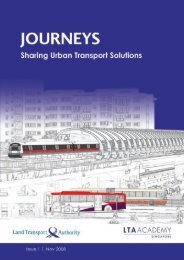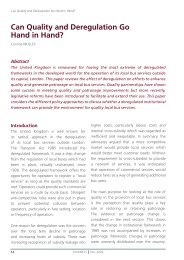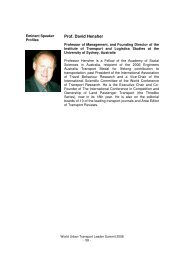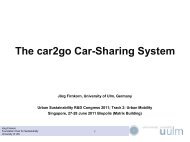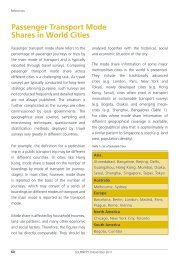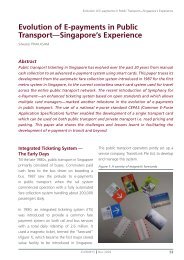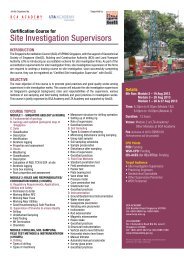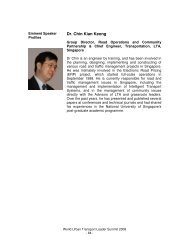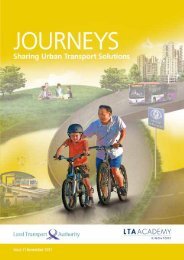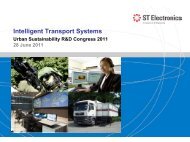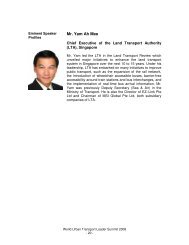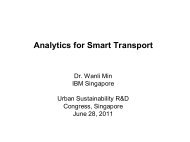Issue 4 May 2010 - LTA Academy
Issue 4 May 2010 - LTA Academy
Issue 4 May 2010 - LTA Academy
Create successful ePaper yourself
Turn your PDF publications into a flip-book with our unique Google optimized e-Paper software.
task, working on a variety of fronts, to make<br />
transportation better and cleaner in time<br />
for the Olympic Games. Beijing instituted<br />
vehicle restrictions on weekdays based on<br />
odd/even license plate numbers. The success<br />
of the measure led to an extension of the<br />
programme, which is enforced through<br />
automated license plate recognition systems.<br />
A percentage of the parking revenues<br />
from every borough helps to fund<br />
the Freedom Pass programme, which<br />
enables disabled and elderly residents<br />
to use public transit free of charge.<br />
Drivers must leave their automobiles at home<br />
one day each week, leading to 800,000<br />
vehicles staying off the streets every day. The<br />
city also expanded the metro and existing BRT<br />
systems in 2008 with new lines and additional<br />
hours of operation. Beijing increased the<br />
regular bus fleet, while decreasing the fleet<br />
of government vehicles by 30%. Additionally,<br />
one-third of the police fleet is now patrolling<br />
using bicycles and electric bicycles. Measures<br />
to restrict automobile use have been<br />
complemented with investments in public<br />
transit infrastructure and policies to promote<br />
alternative modes.<br />
Integrated Transport and Public<br />
Space Planning<br />
Seoul, South Korea<br />
Under the leadership of <strong>May</strong>or Lee Myung<br />
Bak, a 6.4 km elevated highway that once<br />
covered the Cheonggyecheon River in the<br />
center of Seoul was replaced in 2005 with<br />
a riverfront park, high quality walkways<br />
Urban Leaders Find Transportation Paths to Global Green Growth<br />
and public squares (Figure 5). Removing the<br />
road has cut traffic congestion in the area<br />
and the popularity of the measure led to 84<br />
additional elevated roadways being shortlisted<br />
for demolition. The city government<br />
also retrofitted over 58 km along the former<br />
highway corridor with exclusive median bus<br />
lanes, and added more than 100 additional bus<br />
lanes as part of a broader initiative to improve<br />
all aspects of Seoul’s transportation system. In<br />
2007, Lee Myung Bak was elected President<br />
of South Korea largely due to his leadership<br />
in transforming the Cheonggyecheon area<br />
into a national public resource. President Lee<br />
had prioritised environmental stewardship<br />
as <strong>May</strong>or and improved the quality of life<br />
in Seoul.<br />
Figure 5: The highway that covered the<br />
Cheonggyecheon River was replaced with a<br />
riverfront park<br />
Guayaquil, Ecuador<br />
Improvements to deteriorating public spaces<br />
and other public works projects formed an<br />
important part of <strong>May</strong>or Jaime Nebot’s plan<br />
JOURNEYS <strong>May</strong> <strong>2010</strong> 23



